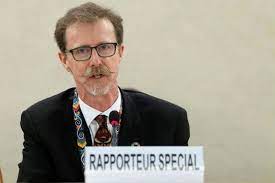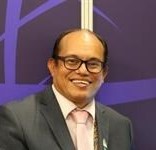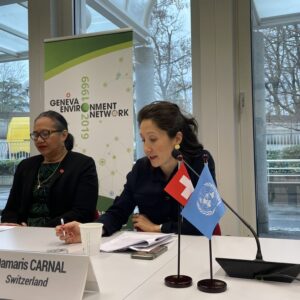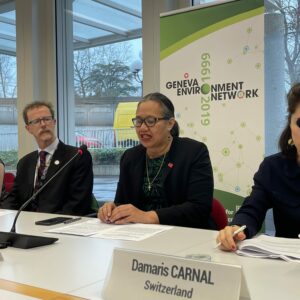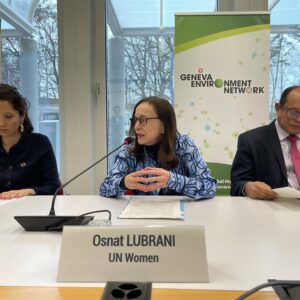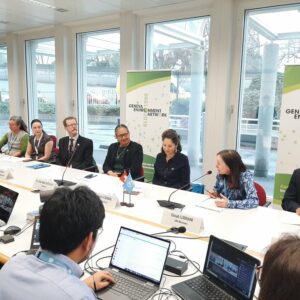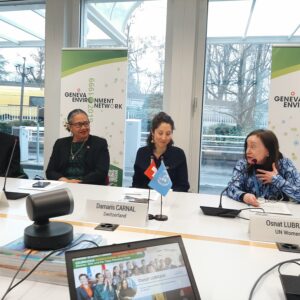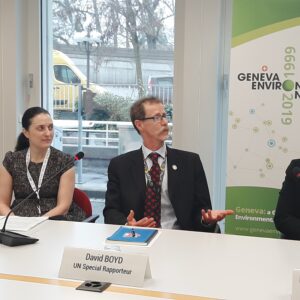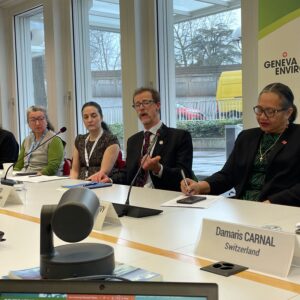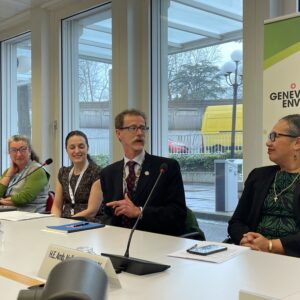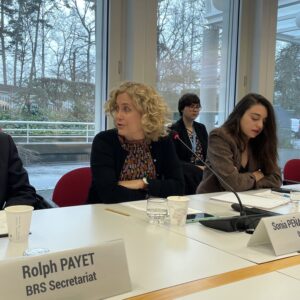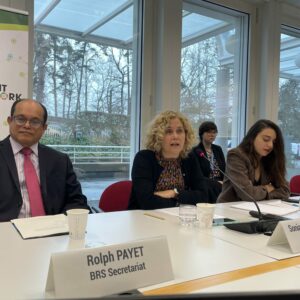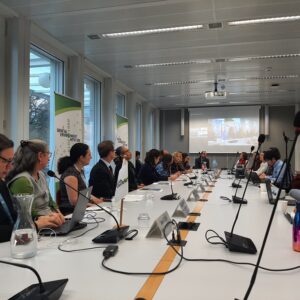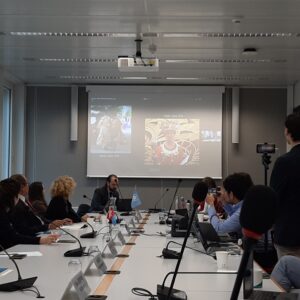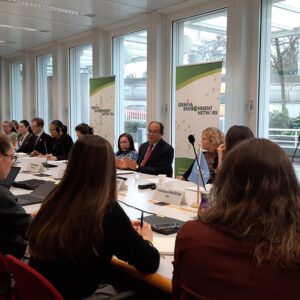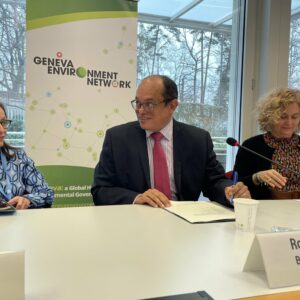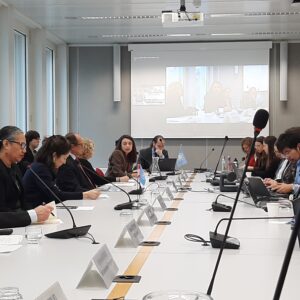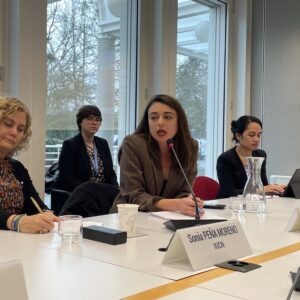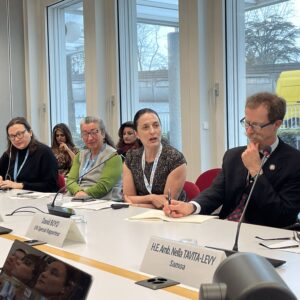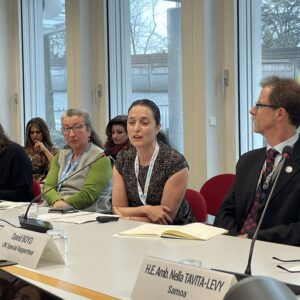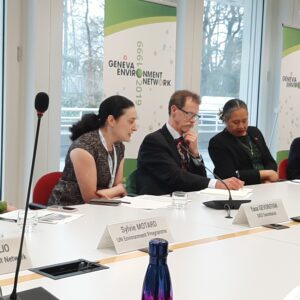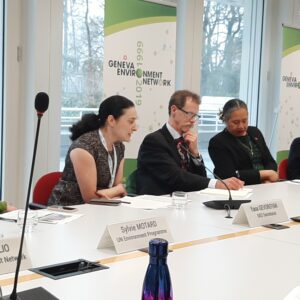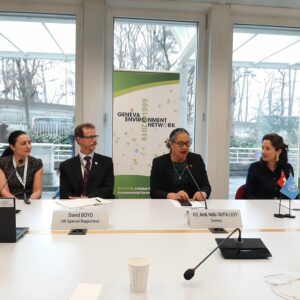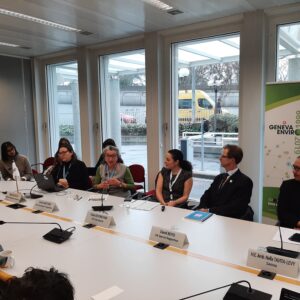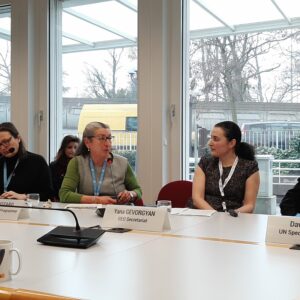Event Conference
Celebrating International Women’s Day 2023 | Women, Girls, and the Triple Planetary Crisis
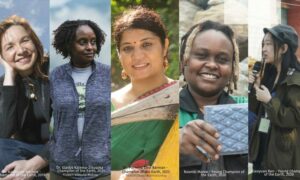
08 Mar 2023
08:30–10:00
Venue: International Environment House I & Online | Webex
Organization: Geneva Environment Network
International Women’s Day (IWD), celebrated each year on 8 March, is a time to reflect on progress made on gender equality, to call for change and to celebrate the contribution of women to numerous challenges around the globe. This session discussed the role of women and girls in addressing the triple interconnected planetary crisis of pollution, climate change and biodiversity loss.
About this Session
International Women’s Day (IWD), celebrated each year on 8 March, is a time to reflect on progress made on gender equality, to call for change and to celebrate the contribution of women to numerous challenges around the globe. This session will discuss the role of women and girls in addressing the triple interconnected planetary crisis of pollution, climate change and biodiversity loss.
IWD is an opportunity to recognize that women and girls play a vital role as agents of change for sustainable development. It is a day to celebrate and reflect upon their achievements, contributions, and solutions agents of change, along with indigenous peoples and local communities, in safeguarding the environment. In this light, this session brings together women from various sectors of International Geneva who play a crucial role as “agents of change” in tackling the triple planetary crisis.
The triple planetary crisis has also distinct and disproportionate harms on women and girls, threatening and violating their human rights, including the right to a clean, healthy and sustainable environment. To achieve gender equality and ecological sustainability, the UN Special Rapporteur on Human Rights and the Environment insists in its latest report to the Human Rights Council that States must tackle gender-based discrimination and environmental injustices with urgent, gender-transformative, rights-based climate and environmental action. His recommendations, that he will present at this session, highlight dismantling systemic discrimination, empowering women, and girls as climate and environmental leaders, and ensuring that women and girls are able to fully enjoy their right to a clean, healthy and sustainable environment.
Finally, in line with the theme for IWD 2023, “DigitALL: Innovation and technology for gender equality”, the session also aims to recognize and celebrate the women and girls who are championing the advancement of transformative technology and digital education, including in the environmental sector. As Geneva plays an important role on data and environment, key stakeholders spoke on how they are leading the way on this topic.
Speakers
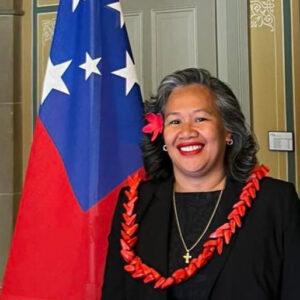
H.E. Amb. Nella Pepe TAVITA-LEVY
Permanent Representative of the Independent State of Samoa to the United Nations Office and other international organizations in Geneva
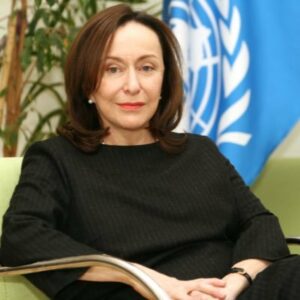
Osnat LUBRANI
Director, Geneva Office & Head, Humanitarian, UN Women
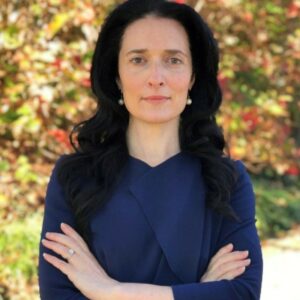
Yana GEVORGYAN
Director, Group on Earth Observations Secretariat
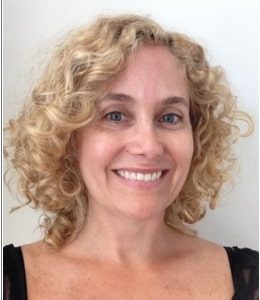
Sonia PEÑA MORENO
Director, International Policy Centre, International Union for Conservation of Nature

Francesca MINGRONE
Staff Attorney, Climate & Energy Program, Center for International Environmental Law
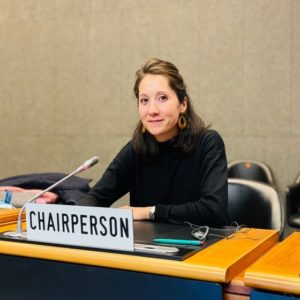
Damaris CARNAL
Switzerland's Focal Point for UN Environment Programme | Moderator
Highlights
Video
Live from International Environment House
Live in the room
Summary
Damaris Carnal | Switzerland’s Focal Point for UN Environment Programme | Moderator
Today’s event is an important opportunity to celebrate and recognize the contribution of women and girls across the world who are acting to tackle the triple planetary crisis and make the place a better world and in harmony with nature. This day is a moment to reflect on the progress and good practices, but also on the many challenges and obstacles women and girls are still facing. As we know, women and girls continue to be distinctly and disproportionately affected by the effects of the triple planetary crisis and this is not acceptable. To address the issue and ensure gender equality we need all hands on deck, and we need to intervene in every area needed. We must improve how we conduct gender analysis and produce gender-sensitive responses based on data and monitoring tools. This is fundamental to ensure we do not exacerbate inequalities and discrimination. More decisive action is required for making women equal partners in decision-making processes, be it at the local, national or international levels. Achieving gender equality is also the only way to tackle the challenges arising from the planetary crisis. We simply cannot ignore half of the planet. Each one of us has a role to play in that regard. On today’s panel, we do not have girls to share their expertise and insight with us, but we are here to underline their contribution to our work; amplify their voices; listen to their messages and calls for action and balance out their disproportionate effects of the triple planetary crisis on their lives. One concrete way we can do this is through the implementation of their right to a clean, healthy and sustainable environment. So even if girls are not here on the panel, they are the future we are working for.
Welcome and Introductory Remarks
H.E. Amb. Nella Pepe TAVITA-LEVY | Permanent Representative of the Independent State of Samoa to the UNOffice and other international organizations in Geneva
I am privileged to celebrate with you this morning an important day to acknowledge and recognise the contribution of women to all areas of sustainable development. The theme of the pathway for the development of Samoa is empowering communities, building resilience, and inspiring growth. The pathway focuses on people and is based on shared values of fairness, respect, inclusiveness, and responsibility, both for one another and for our land and ocean resources. Christian principles and Fa’afafine culture and traditions underpin our way of life. We are communal people taking collective responsibility for each other, our families and the good of all in our villages, our communities and our country. We believe in shared prosperity, social equity, social security, and the sustainable use and protection of our natural resources. These values and customs have shaped our approach to development over the years in the face of growing economic, social, and environmental challenges, and the recent health pandemic. Samoa is a small island developing state in the heart of the Pacific Ocean, as such, the ocean is significant to our well-being, livelihoods, food security, resilience, and sustainable development of our economy through fisheries and tourism. The Blue Pacific has the collective commitment to ensure the security of our shared ocean geography, resources, and ecosystems therein, including from the impacts of climate change and disasters as we are experiencing the rising sea levels, saltwater intrusion, crop damage, loss of fish stocks, intensifying frequency of king tides, and natural disasters. Recent extreme weather events in the Pacific region bring a sobering reminder of the vulnerability that small island developing countries face. Suva has declared a national state of emergency yesterday following the devastation caused by twin cyclones and earthquakes last week.
The Samoa policy for gender equality identifies seven key strategic priorities including the environment with key outcomes to increase the visibility, contribution and engagement of women and girls in agriculture, climate change, natural resource management, and disaster preparedness and response. Especially those women and girls facing multiple and intersecting barriers and forms of discrimination. The same policy document acknowledges that there is relatively little gender analysis of climate change and calls for the need to strengthen the collection and disaggregation of data by sex and gender, and to ensure analysis is consistent with the gender-transformative approach. Empowering women and girls to capitalize on the opportunities from technological advancements and bridging the digital gap can further support their participation from rural areas and remote islands in the climate change discourse. Women’s role in our families communities and country as nurturers, homemakers, advisors, facilitators, mitigators, and leaders, are foundational elements of agents of positive change. Samoa is one of 27 countries in the world with women as heads of government. According to the 2020 statistics of women and leadership, and as remarked by the honourable Fiamē Naomi Mataʻafa Prime Minister of Samoa at the recent championing women’s economic equality forum in New York on Monday, she was in the category of less than 7% of the country leaders who are women. Our national leads on climate change and environments and negotiations are women, inspiring young girls and climate change champions and advocates.
Osnat LUBRANI | Director, Geneva Office & Head, Humanitarian, UN Women
Listening to Ambassador Tavita-Levy’s words brings back memories of my years working in the Pacific, dealing with natural disasters. In those times, Samoa showed incredible leadership in convening all of the small island states in the first conference on the ocean. Samoa has been for a long time an example of leadership, gender equality and women’s rights.
The disproportionate impact of the triple planetary crisis on women and girls
The triple crisis of climate change, pollution and biodiversity loss threatens to be joined by a fourth crisis: the rights of women and girls. All of these crises exacerbate gender inequalities and undermine women and girls’ rights to a clean, healthy and sustainable environment. It is important to remember that International Women’s Day is not just about listening to women’s and girls’ voices and understanding how those crises are affecting them, but also that we also must ensure that they are at the forefront of shaping solutions as decision-makers. Data is clear on the fact that women and children are 14 times more likely than men to die or be injured from a natural disaster and my personal experience also confirms that. Women make up 80% of the 21.5 million globally displaced every year by climate change-related events. Displacement and forced migration are likely to rob women and girls of access to education. In Somalia, for example, when families were forced to migrate from rural to urban areas due to floodings or conflict, girls’ enrollment rates dropped from 45% to 29% while boys’ tend to rise after displacement.
Climate-induced disasters have been shown to increase gender-based violence as well as the disproportionate share of unpaid care and domestic work carried out by women. Issues such as limited access or control over land, environmental goods, information, and financial resources increase women’s vulnerability. Furthermore, the destruction of livelihoods and exacerbated poverty resulting from these crises can also lead families to resort to child marriages to have one less mouth to feed and to receive a sum of money.
On this International Day, we also must acknowledge and celebrate the amazing power of women and girls. Indigenous women are leaders in environmental action and sustainable management of natural resources, they defend the land and preserve water in their communities. Their lives are anchored in the commitment to protect and respect diversity using traditional knowledge and customary institutions.
It is not only unjust; it also is irrational and senseless to exclude women who are holders of knowledge and expertise from decision-making for addressing the enormous challenges of the triple crisis. Today we recommit to doing more personally and professionally, and to advance solutions to address this triple crisis of climate change and environmental and biodiversity loss.
Women, girls and the right to a clean, healthy and sustainable environment
David BOYD | UN Special Rapporteur on human rights and the environment
It is very humbling to be on a panel with so many brilliant women. Despite there being no girls on the panel to share this experience, we can use the testimonies shared in a similar event held on 6 March and those illustrated in the Report on women, girls and the right to a clean healthy and sustainable environment (A/HRC/52/33). This year we are celebrating the 75th anniversary of the Universal Declaration of Human Rights. The first draft of that document, back in 1948, began with the words ‘all men are born free and equal in rights and dignity’. It was Indian educator and activist Hansa Mehta who challenged that wording and pushed it for using ‘all human beings’ instead. This anecdote reminds us of the role of women in the field of human rights already 75 years ago since the Universal Declaration.
The Convention to End All Forms of Discrimination Against Women (CEDAW) came into force more than four decades ago, in 1981, and yet systemic discrimination continues to persist in every state and sphere of society. Discrimination and sociocultural norms, stereotypes and biases impair women’s and girls’ ability to enjoy fully all their human rights – including the right to a clean, healthy and sustainable environment. It is incumbent upon us to work on two processes in the face of the triple planetary crisis: tackling systemic discrimination and tackling the climate emergency, biodiversity loss and pervasive pollution. Gender-transformative action is necessary to change the norms and systems that perpetuate inequality and discrimination. If women and girls are systematically excluded from environmental decision-making, they are unable to enjoy a fair share of the benefits of nature and bear a disproportionate burden of the triple planetary crisis. For example, millions of women and girls die every year because of gendered cooking responsibilities that expose them to household air pollution from unclean fuels and inefficient cookstoves. During a similar event held yesterday in the context of the 52nd session of the Human Rights Council, a young girl from Rwanda talked about the impact of the gendered responsibility to gather water, which affects the education quality of girls.
The historic resolutions of the Human Rights Council and the General Assembly in 2021 and 2022 respectively that allowed the adoption of the right to a clean, healthy and sustainable environment, would not have been possible without the contributions of women leaders. This is one among millions of examples of women and girls as inspiring role models in the context of environmental human rights defenders. When women and girls are involved in the design and implementation of environmental and climate policies, better outcomes are produced. Women’s involvement coincides with more efficient use of water women or better biodiversity outcomes. Evidence shows a strong positive correlation between women in positions of political authority and lower carbon footprints; stronger environmental standards or higher levels of ratification of international environmental treaties. Evidence about the benefits of engaging women and girls compels respecting their fundamental human rights.
The latest report includes more than 200 good practices from 100 countries around the world in terms of implementing and recognizing women and girls’ rights to a clean, healthy and sustainable environment and four categories of recommendations that will enable tackling both systemic discrimination and the triple planetary crisis:
- Empowering women and girls as environmental leaders by breaking down the barriers to their participation and providing greater access to education;
- Empowering women and girls as economic actors for example by ensuring equal access to land and resources we know that women and girls make up half the world’s agricultural workforce but women only own 20% of the world’s land so just incredible progress that we need to make;
- Providing additional resources to women and girls; grants for grassroots women and girls organizations increasing the flow of biodiversity and climate finance to women and girls, particularly for projects that they have been involved in the creation and design and implementation of;
- accelerating human rights-based and gender transformative action to tackle climate and environmental challenges and that involves ensuring access to clean air, safe drinking water and sanitation, healthy and sustainably produced food non-toxic environments, healthy ecosystems and biodiversity, and a safe livable climate.
It is critically important that we work together to achieve both gender equality and ecological sustainability. We have the capacity to achieve the sustainable development goals and a just and sustainable future to realize the right of every woman and girl to enjoy a safe, clean and healthy environment. The work ahead is hard but we have examples of good practices and tremendous leadership.
Women and girls addressing the triple planetary crisis
Sonia PEÑA MORENO | Director, International Policy Centre, International Union for Conservation of Nature
Gender equality is a human right and a prerequisite for sustainable development and for achieving IUCN’s own mission of a just world that values and conserves nature. IUCN is committed to advancing gender equality including through women’s empowerment as a union that understands the importance of equal opportunity and inclusion, and whose policies respect and promote diversity. IUCN gender efforts vary from:
- close collaboration with the secretariats of various environmental conventions to mainstream gender considerations into their decision-making processes of these agreements;
- developing gender plans of action.
The loss of biodiversity is disproportionately felt by poorer communities, women and girls because of gender disparities. For example, a recent analysis by the International Institute for Environment and Development (IIED) argues that when resources become scarcer, women must spend more time and energy than men making up for the shortfalls. Gender equality and women’s empowerment are essential for the sustainable use of biodiversity. As gender inequality is ingrained in the existing social structures that manage and impact sustainable use, access to and control over biological resources and the sharing of the benefits arising out of their use and this is often unequal. Not only do conservation efforts exist in social structures that are inherently unequal, but they also do not have as strong an impact if they are not designed and implemented with the inclusion of all community members. Understanding and exposing gender-differentiated biodiversity practices contribute to successful conservation and make efforts more effective and efficient when women and vulnerable groups are empowered to participate as equals. In the run-up to the Kunming Montreal Global Biodiversity Framework adoption last year and the years before, IUCN actively advocated for a standalone target on gender equality. This is today Target 23, which aims to ensure gender equality in the implementation of the new framework through a gender-responsive approach in which it is expressly recognized that women and girls have equal rights and access to land and natural resources. It marks an important step forward, but the devil is in the details and doing implementation right is fundamental. IUCN called on the parties of the Convention on Biological Diversity to ensure that gender-responsive indicators were included throughout the monitoring and evaluation framework, aligned with each one of the targets that were negotiated and adopted in Montreal. IUCN deems the equal importance of tracking progress against the targets and the need for a stronger and intentional language that aligns and builds complementarity with both the CBD Gender Plan of Action and the 2030 Agenda for Sustainable Development. For successful and effective multilateralism, the alignment of different frameworks on gender mainstreaming is an essential prerequisite.
Women’s use of biodiversity and natural resources is significant in forest communities. For example, women can generate more than 50% of their income using forest resources, compared to about one-third of men. While facts confirm that women’s participation in conservation action makes a difference, its recognition is often lacking. Statistics show that 47% of the work in the fishery sector on a global scale is provided by women or that in Cambodia, for instance, women own 61.2% of their 500,000 or so micro, small and medium enterprises, but these things are always under-documented and not known to the wider public. When countries, especially those in the Global South are struggling with the implementation of the SDGs, there is increasing recognition of the role of culture and gender in promoting inclusive development; eradicating poverty; and advancing environmental sustainability.
Gender matters for biodiversity conservation and sustainable use because women access different spaces, use different resources, and have different priorities compared to men. Due to women’s marginalization from decision-making conservation, interventions are more likely to negatively impact them. For example, restrictions on seaweed harvesting in the Gulf of Mannar biosphere reserve in India in force since 2002, undermine women’s financial autonomy, exacerbating harm to those experiencing domestic violence, despite the benefits of seaweed harvesting for the environment.
In terms of environmental and human rights defenders, including indigenous peoples, women and youth as frontline defenders against environmental degradation contribute significantly to environmental and climate justice, and biodiversity conservation and equally establish best practices for environmental conservation embodied through their cultural practices and traditional knowledge. Environmental human rights defenders are confronted daily with numerous forms of repression, which impact their ability to engage in activism. They are often the subject of intimidation, assault unlawful detention and other violations. According to a recent Global Witness report, at least 1733 environmental human rights defenders have been killed over the last decade, and women and EHRDs are considered particularly vulnerable to gendered forms of violence such as sexual violence, psychological and emotional abuse, and attacks on their families. Historically, women EHRDs have been on the frontlines for advancing the rights of women and children in their communities and contributing to policy discussions at regional and international levels. The vulnerability of women involved in environmental activism underscores the importance of gender-specific responses to their safety and protection needs. IUCN has worked extensively to put forward the cause of women and girls in their pivotal role in the conservation of this precious planet.
Rolph PAYET | Executive Secretary, Basel, Rotterdam and Stockholm Conventions
As Executive Secretary for three multilateral environmental agreements on hazardous chemicals and waste, the Basel, Rotterdam and Stockholm Conventions, and as a former Minister of the Environment and Energy for Seychelles, I would underscore the importance of placing gender equality at the centre of solutions to tackle the triple-planetary crisis of climate change, biodiversity loss, and pollution. My understanding of the role of women and girls is influenced by my own experience. In my work to develop the University of Seychelles, I was confronted with the important role it would play for women in a context where the burden of raising children was mostly on their shoulders and leaving the country for studying was not an option.
Impacts of hazardous chemicals in human health
Exposure to industrial chemicals, heavy metals, pesticides and other pollutants causes various health issues and risk to life from cardiovascular disease and respiratory illnesses to cancer and reproductive harm. Certain types of chemicals, such as persistent organic pollutants or POPs, can build up to dangerous levels causing adverse reproductive, developmental, immunological, hormonal, and carcinogenic effects with varied impacts on vulnerable groups. These dangers are often invisible.
Gender related aspects of hazardous chemicals and wastes
- With the BRS Conventions, we know that due to a combination of socio-economic, cultural and physiological factors, pollution caused by hazardous chemicals and waste has disproportionate and distinct impacts on women and girls:
- Lower access to education plays a role. In farming, more than 40% of agricultural work in developing countries is done by women and girls, while women are twice as likely to be illiterate, than men. Vital safety information and labelling on chemicals and agricultural pesticides, for example, is therefore less likely to be accessible to women farmers and farmworkers, increasing the likelihood of mishandling and exposure to toxic chemicals.
- Societal norms also feed in, and in many places, women perform the bulk of domestic work, including the sorting, removal, and disposal of waste resulting in high levels of exposure to hazardous wastes. Unmanaged plastics pollution, that at the BRS Secretariat we are increasingly working on, can also disproportionately expose women performing domestic work to the toxic fumes of burning of waste containing plastics .
- Cultural norms can likewise emphasize women and girls’ vulnerabilities to hazardous chemicals, as cosmetic and hygiene products predominantly marketed to women often contain toxic substances, including heavy metals, mercury, and lead.
- Finally due to women’s smaller size and role in the reproductive cycle, women are proportionately more heavily impacted than men even when exposure is the same. And geographic location can add to these impacts. For example, the breast milk of Inuit women in the Arctic contains levels of persistent organic pollutants up to nine times higher than that of women in southern Canada .
BRS conventions work on this topic
- These kinds of impacts threaten women and girls’ enjoyment of their rights. As the Special Rapporteur on human rights and the environment has recommended in his recent report, there is a need to strengthen regulations on chemicals that disproportionately harm women and girls – which the BRS Conventions can help to achieve.
- It is for these reasons that the BRS Secretariat’s work on gender mainstreaming has been so important. This work goes back to 2012 with the development of the BRS Gender Action Plan, followed in 2017 by the adoption of a decision on gender mainstreaming under each of the three Conferences of the Parties. In addition to these, a Gender Focal Point is part of the BRS Conventions team.
- All people, irrespective of gender identity, must have the same rights, responsibilities and opportunities to achieve the sound management of chemicals and wastes, and gender mainstreaming is vital to achieve most of the Sustainable Development Goals.
- To identify and address inequalities, we also need data that enables identification of impacts based on gender. With the BRS Conventions, we have observed how sex-disaggregated data demonstrates that women are more impacted by exposure to chemicals and wastes and have less access to participation in decision-making processes.
- We have found that it isn’t enough to just have a global view on gender mainstreaming – we also need to distil this into tangible actions tailored to different regions, national settings and developmental contexts.
- To date, we have carried out 6 projects in Bolivia, Indonesia, Kyrgyzstan and Nigeria, and, most recently, in Kenya and Tunisia, to improve our understanding of the gender, chemicals and waste nexus in different developmental settings and have developed specific country-context recommendations for improvements.
- For the latest projects in Kenya and Tunisia, an outcome report on Tackling Toxics and a short documentary film will be launched during the 2023 meetings of the BRS Conferences of the Parties in May.
- The Stockholm Convention acknowledges in its preamble the “health concerns, especially in developing countries, resulting from local exposure to persistent organic pollutants, in particular impacts upon women and, through them, upon future generations”.
- The Stockholm Convention on POPs also integrates gender into the obligations of Parties on participation and access to information.
- In accordance with Article 7 of the Stockholm Convention, “Parties shall, where appropriate, consult their national stakeholders, including women’s groups and groups involved in the health of children” on their national implementation plans.
- Furthermore, Article 10 on public information, awareness and education states that Parties shall, promote and facilitate, the “[d]evelopment and implementation, especially for women, children and the least educated, of educational and public awareness programmes on persistent organic pollutants, as well as on their health and environmental effects and on their alternatives”.
- In this context, it’s important to ensure the participation and access to information of women and girls as agents of change in law and policymaking, and we need to see more women in decision-making positions that shape laws and policies on wastes and chemicals.
- Both the Gender Heroes publication and the Gender Pioneers initiative under the BRS Conventions point to examples of the empowerment of women in marginalised communities and the impacts that their actions have had, for example, in the promotion of ecological agriculture and the reduction of use of highly hazardous pesticides, in the protection of children from the toxics found in toys and in the collection of e-waste from landfill sites.
It is reassuring, to see that women are increasingly assuming leadership roles to protect the most vulnerable segments of our population from the potentially harmful effects of certain chemicals and wastes. The international community will soon come together at the joint meetings of the Conferences of the Parties to the Basel, Rotterdam and Stockholm conventions (the Triple COPs) in Geneva, from 1-12 May, which will provide an opportunity to take this work forward.
On a personal note, breaking down gender barriers is especially important to me as a professional, a global citizen, and as a father. I am also delighted to be part of the network of International Gender Champions, and I encourage you all to look into the work we do and how you too can take part.
Francesca MINGRONE | Staff Attorney, Climate & Energy Program, Center for International Environmental Law
- To better contextualize gender action in terms of climate change, it is necessary to took at what the status of science is. We are in the midst of a climate emergency. Climate change is having impacts on people and ecosystems, leading to loss of lives, loss of livelihood, loss of biodiversity. We know that adaptation has limits – even if we took steep emission reduction measures today, there would still be losses and damages suffered across the globe that we can’t recover from. We know what we need to do to ensure that global average temperature increase is kept below 1.5 degrees celsius with no or minimum overshoot. And yet, we also know that states are not doing enough to reduce their GHG emissions. Based on recent estimates, the current emission rate is compatible with a temperature increase pathway of up to 6 degrees Celsius. And even the pledges that States have communicated concerning their mitigation efforts – the so called nationally determined contributions under the UNFCCC- are not enough. If they were all implemented, they would lead to a temperature increase of around 2.5/3 degrees.
- All of this is an important background in the discussion of women and girls in the context of climate change. Data tells us important stories: they tell us the state of climate change, but also that the effects of it are perceived definitely across countries but also within countries depending on gender, age, socio-economic status, and so on. With specific focus on women and girls, we know that overall, they are the group that is most affected by climate change. That applies to developing but also developed countries. When disasters strike, research suggests that there are more casualties among women than men, and that in the aftermath of disasters, they are more prone to poverty and gender-based violence.
- Looking at the environmental democracy side, women are also one of the groups that are most discriminated against. While of course it is difficult to make generalizations, studies show that women on average are consulted less in policy planning, and face more hurdles in accessing justice. Thus, when discussing climate change from the perspective of women and girls rights we cannot not tackle the issue of discrimination and structural inequality. In one of her latest reports, the UNSR on violence against women and girls identified discrimination and gender-based violence in the context of the climate crisis.
- As it has been stressed in her report (and many others), we cannot forget the importance of an intersectional approach – as gender-based discrimination often intersects with other forms of discrimination – based on age, disabilities, ethnicity, socio-economic status and so on. The Women and gender movement has been very aware of intersectionality and has been a promoter of an intersectional approach for years. In the context of the UNFCCC for instance, the Women and Gender Constituency has done amazing work in integrating and elevating the demands of other constituencies and groups – for instance the Indigenous Peoples, youth, people with disabilities, trade unions etc.
- While it is important to look at and andress the underlying issue of discrimination, we shall not forget that to effectively protect, promote and respect the rights of women and girls in the context of climate change, we must tackle the root causes of it. Today we are here around the theme of the triple planetary crisis. And we look closely, we see one common common thread across biodiversity loss, pollution and climate change: fossil fuels. We know that they are the core driver of climate: 75% of emissions globally are caused by fossil fuel production and use. We know about the devastating impacts on biodiversity not just of climate change in general, but fossil fuel specifically (extraction, oil spills).
- Fossil fuels are the main source of plastic and fertilizers, that are polluting and poisoning ecosystems and people. More and more attention is given to the dire impacts of petrochemical facilities on the surrounding environments and communities – Boyd and Orellana used the term “sacrifice zones” to describe those areas where environmental degradation, pollution and social inequalities intersect with dramatic consequences, especially for women and children. Despite all of this, fossil fuels continue to be extracted, used and exported. And we see that the nexus fossil fuels-women’s rights has not been made explicit enough: we can think of countries that are leaders in terms of gender equality at the national level and that are promoting feminist climate policies – this is incredibly important and we need these kind of champions, but it is worrying to then see that some of these countries are then among the biggest producers and exporters of fossil fuels. Thus, making a better nexus between fossil fuels and protection of women’s rights is imperative.
The role of Geneva
Geneva has a key role to play in promoting gender-responsive climate action. In the context of the Human Rights Council, the WG on the Elimination of Discrimination against Women and UNSR on violence against women are increasingly looking at climate change. And viceversa, other Special procedures are looking systematically at the issue of women and gender in their own reports – David’s report is a great example of that. On the Treaty Bodies’ front, the CEDAW is doing important work at systematically looking at States’ obligations to promote, protect and respect the rights of women and girls through climate lenses and has issued strong recommendations to some State parties on their duty to reduce emissions and revise their fossil fuel extraction and export.
CIEL is part of the Geneva Climate Change Consultation Group (GeCCco) is an informal group of NGOs mostly based in Geneva, working at the intersection of human rights and climate change. While our focus is broader than women and gender issues, we put strong emphasis on intersectionality and on the need for climate action – whether it is mitigation, adaptation, finance or remedy – that is strongly grounded in human rights. Only a sound human rights-based approach can ensure that all types of violations and discrimination are tackled, and that measures that are taken to address climate change not only do not violate fundamental human rights, but actually promote better protection and tackle inequalities. We do that by providing inputs to Treaty Bodies, engaging with Special Procedures, and participating in the consultations on relevant resolutions at the Council. Some of us follow the work of the Aarhus Convention, which is key to promoting environmental democracy. And we try to bring human rights into climate-specific fora like the UNFCCC. For instance, I will be going to the IPCC session in Interlaken. As I said at the beginning, it is key to have a strong scientific framework to guide States’ action on climate change. Across its thematic and special report, the IPCC has already looked at women rights and gender. It will be interesting to see how the women and gender dimension will be reflected in the Summary for Policy Makers that will be negotiated and adopted next week. We could think of having a debrief after Interlaken and take stock of what has happened, from a gender and rights perspective.
Inclusive partnerships and the role of data to tackle the triple planetary crisis
Yana GEVORGYAN | Director, Group on Earth Observations Secretariat
The scale of the inequality crisis is just staggering and felt on many levels and aspects. It is saddening and tragic that while the international community has all the good intentions in advancing gender equality, the human population is undoing much of that progress through conflicts and preventable events. Data and earth observation in particular play a role in driving transformative change and helping tackle the triple planetary crisis. The Group on Earth Observation represents a global partnership engaged in observing the earth from space, the atmosphere, the surface of the planet, underwater and also from citizens.
Data Illuminates
The transformative power of data lies in the fact that data illuminates. It is true we cannot manage what we cannot measure, but it is also true that we cannot measure what we cannot see. Being able to see things on the ground allows knowing there is an issue that requires a solution. In the current context of a plethora of data being generated daily, it is unthinkable to have dark spots on the earth. We should have information about every spot on earth, because if you are not mapped, you do not exist. If you are not mapped, people are unaware of the problems taking place in your area. As the YouthMappers project put out in their documentary, communities that are not on the map are left out in developmental strides. To address this scary problem, they employed young people and university students at the core of the mapping project of their own areas. These gave them the possibility to collaborate with colleagues around the world for a common purpose. Their effort demonstrates that to achieve transformation, we need to build capacity. The Giga Project initiative between ITU and UNICEF aiming to connect children powering their schools to the internet is one among the many examples of this effort. Yet, a long way is ahead to illuminate every dark spot on earth. GEO established a partnership with ITU, Sustainable Energy or IRENA in order to lift the fog and shine the light on the places where people live. It is a massive challenge, but one we have the institutions in place to address.
Data Educates
Data can often seem dry and rigid, and sometimes people do not like to read it because data does not always tell a good story or highlights shortcomings. One way to ensure that people care about the data we put out there is to connect it to their hearts and minds. That can only happen if people understand that data in their local or national context and are able to connect it to their own environment through education. The best way to educate people on data is through the inclusive participation of people in data gathering.
Data Protects
The example of community mapping of urban heat islands in the United States conducted shows how people’s participation allowed local municipalities and community leaders to make informed decisions about their urban design and how to counter the number one cause of mortality in the country. This serves as an inspiration for our work in the context of extreme. GEO is currently developing a global project with WHO and WMO to recreate a global heat health service extreme heat. This is relevant in today’s discussion as extreme heat is a huge risk to women everywhere, even to be able to bring their pregnancy to full term and deliver healthy babies. By ensuring that major cities and human settlements around the world can have access to accurate and predictive information about extreme heat, we can help them to plan smartly and protect their population.
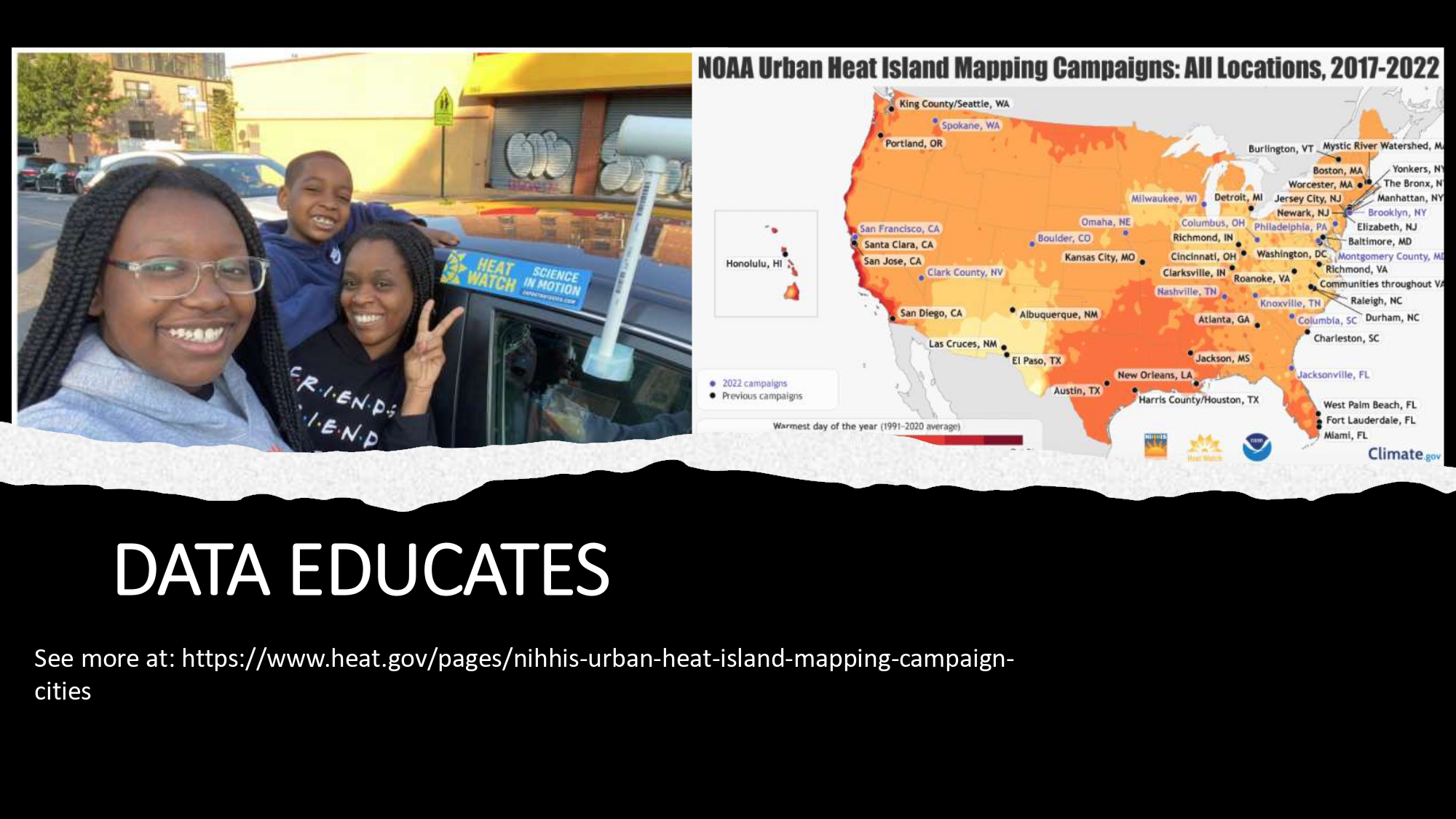
The protection data offers in terms of the triple planetary crisis climate change biodiversity is fundamental in the work of the more than five-hundreds MEAs addressing it. Yet, the fragmentation within the environmental governance system given the fact that every convention receives and addresses one type of science raises the question of who is going to create uniformity around the information. As the earth is one interconnected system, we want earth observation to be one solution to creating a single common authoritative framework for providing critical information to the various environmental conventions and beyond. Earth observation can be used to set targets; monitor progress; identify hotspots and more. Even the finance sector is showing a growing interest in it to deal with its need to report on climate and biodiversity risks. There is an evident need to have a reliable and uniform source of information on ecosystems and biodiversity. For example, the Ramsar Secretariat for Wetlands uses over 30 wetlands monitoring products while countries still lack information to build their wetlands inventories. Lack of data is not the issue, but the lack of collaboration is. Integration data is extremely challenging due to different platforms, approaches, communities and networks of people. Nevertheless, as the images of the vanishing Aral Sea and the plume of dust surrounding it show, what seems to be an individual problem is connected to health, socio-economic challenges and ecosystem devastations. Like a Swiss watch where the malfunctioning of a single cog impairs the whole mechanism, cooperation on the various aspects of the triple planetary crisis is essential and data is an enabler for this.
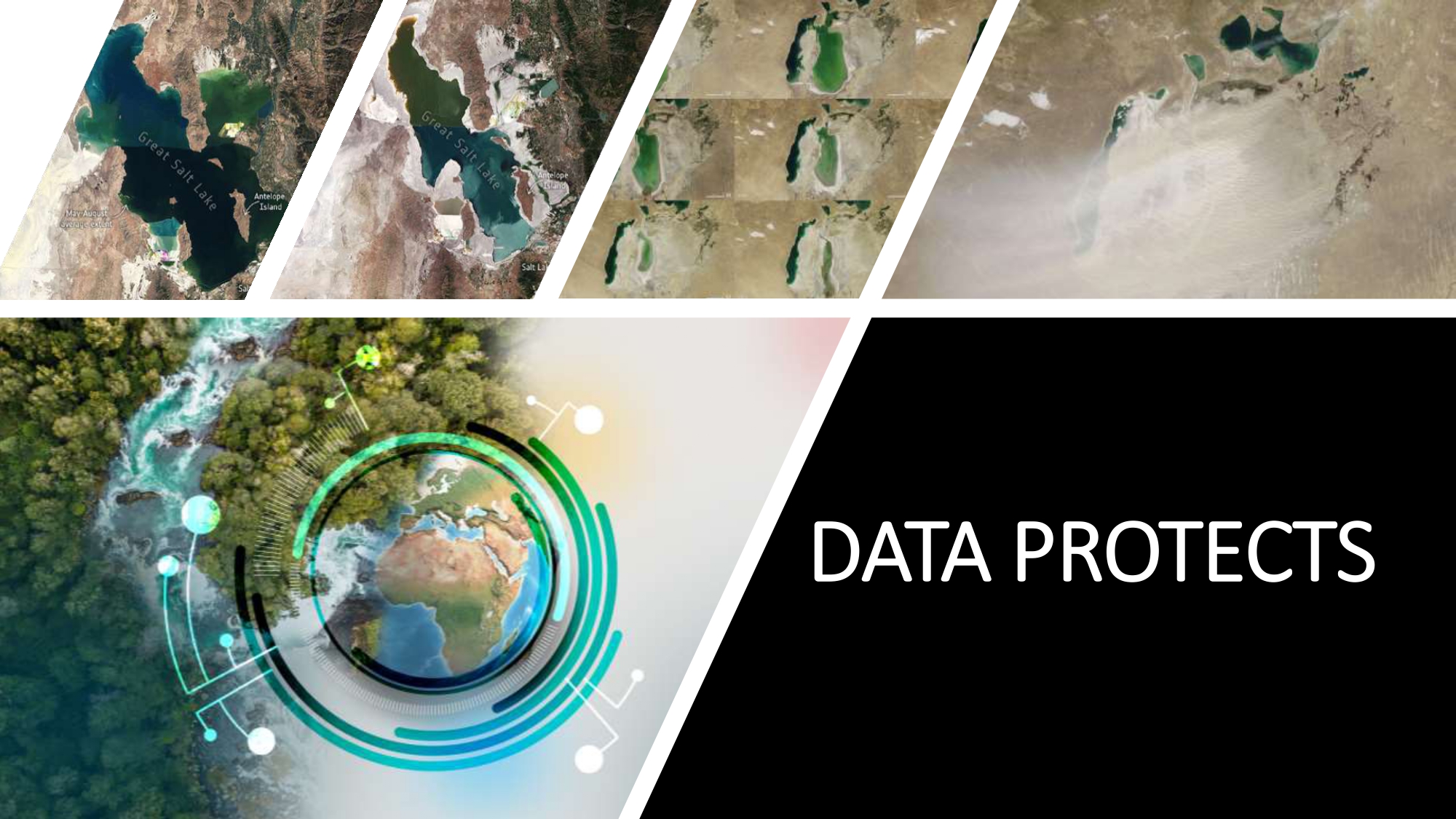
Data Empowers
Data has empowered and allowed the equal participation of women and girls, especially in their early and mid-career. Professionals have been key drivers for the inclusive tackling of the ecological and gender crises. From the joint need of sisterhood, Women in Geospatial + have created a powerful network and which now is a community of thousands of professionals who are constantly supporting one another.
Concluding Remarks
Sylvie MOTARD | Acting Director, Europe Office, UN Environment Programme
The major environmental and women movements gathered momentum around the same time, with the first Conference on the Human Environment hosted in 1972 in Stockholm and the first Convention on the Status of Women taking place in Mexico in 1975; and then again in 1992 with the Rio Conference and 1995 with the Beijing World Conference on Women. In this time, we moved from a basic understanding of women’s rights as human rights to a recognition of women’s role as leaders and drivers of action.
This year’s International Women’s Day is celebrated around the world under the theme DigitALL: Innovation and technology for gender equality, which is clearly linked with the Triple Planetary Crisis. As UNEP drives action for planetary sustainability for people, prosperity and equity, in order to address a planetary and human crisis caused by unsustainable patterns of consumption and production, we seek enablers. Enablers like science-policy and environmental governance, as well as finance, economic and digital transformations are key to advancing several initiatives focusing on taking climate action, nature action and chemicals and pollution action.
We have taken on digital transformations as an enabler to tackle the Triple Planetary Crisis and UNEP works to integrate datasets, analysis and digital public goods associated with climate, nature and pollution into an inclusive digital ecosystem for people and the planet.
Digital technologies and data provide real-time and actionable insights on the state of the planet, in particular play an important role to support climate change mitigation and adaptation actions, and benefit nature protection and ecosystem restoration, as well as improve monitoring and decision-making capacities. UNEP will use digital technologies and non-traditional sources of data to plug key data gaps in monitoring progress of the environmental SDGs and multilateral environmental agreements.
As we have focused on the role of Women, Girls, and the Triple Planetary Crisis, I want us also to reflect on the global theme of the day, that leads us to the fact that Women and Girls are particularly under-represented in science, technology, engineering, and mathematics (STEM) education, and consequently, in STEM careers. We must do more, the world needs to do more, each one of us, in our own organizations need to do more to address gender equality. At UNEP, gender equality and women’s empowerment is recognized as a cross-cutting priority across all aspects of our work. UNEP promotes men and women’s participation in all environmental protection and sustainable development activities.
In terms of governance, the UN Environment Assembly: the world’s highest-level decision-making body on the environment – adopted resolution 4/17 on promoting gender equality and the human rights and empowerment of women and girls in environmental governance. Decisions of this nature are translated into our Medium-Term Strategy (MTS) to strengthen institutional capacity for gender-responsive programme delivery.
In addition to mainstreaming gender into our work, we are addressing gender gaps, in line with the Secretary-General’s System-wide Strategy on Gender Parity, by supporting overall gender interventions to achieve the gender equality that contributes to achieving the SDGs. I am pleased to say we considerable progress has been made towards gender parity.
The action for DigitALL is long overdue, and just like there is an enormous digital gap (in access, use and quality), it is even worse to look at the gender and geographic digital divide. Women and girls must be given equal access to digital technologies and empower them with skills to become the center of the digital drive, but not the group left behind because of the digital divide. Digital technologies, solutions and transformation opens new opportunities to empower women and girls to be champions to tackle the Triple Planetary Crisis.
As we all work to eliminate all forms of disparity and inequality, let us not forget to work hard to limit the negative impacts and externalities of digital solutions (manufacturing and use) on the environment (greenhouse gas emissions, energy consumption, tsunami of e-waste, water consumption, and loss of raw and rare earth materials).
We all bear the obligation invest in and empower women and girls – in your organizations, communities, schools, universities – to fully utilize digital solutions to tackle the Triple Planetary Crisis. I am more convinced if we fully empower women and girls, they will significantly contribute to making our world (digital or otherwise) more inclusive, safer, heathier, and sustainable for all. This is not just about women and girls, but for all of us – no matter where we come from.
Photo Gallery
Documents
Links
- International Women’s Day 2023 | UN Observance
- International Women’s Day 2023: “DigitALL: Innovation and technology for gender equality” | UN Women
- Gender and the Environment | GEN Update
- The Power of YouthMappers: Shining a Light on the Movement | Documentary | YouthMappers

